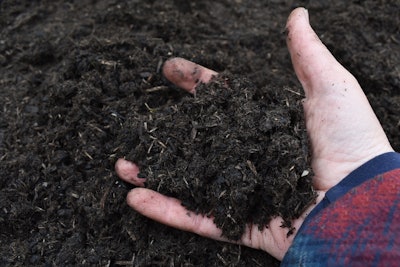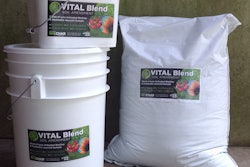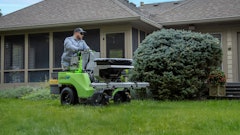
Across the country, homeowners, landscaping professionals and commercial property owners alike are being forced to adapt amid climate change-driven droughts, extreme temperatures and restricted watering. As a result, the hurdles of owning nonfunctional turf are compounding, leading many to take advantage of lawn-removal rebate programs.
It’s unfortunate, however, that no one is talking about the benefits of green spaces within cities. Studies have shown that greenery such as lawns, trees and plants have numerous climate-related benefits, including cooler temperatures, improved air quality, mitigated storm-water runoff and protection of the local wildlife habitat. Rather than removing lawns completely, perhaps we can work toward caring for them in a way that is more climate-friendly so that we can still reap the benefits.
We should reevaluate our entire tool box to make sure that every option is being exhausted before tearing up lawns. For example, biochar is an increasingly popular, yet not quite mainstream, solution that can help lawns hold water in soil for significantly longer periods, making a limited water supply last longer. Furthermore, biochar can sequester about three times its weight in atmospheric CO2.
Biochar has increased in popularity thanks to its intrinsic ability to hold water and nutrients longer. Municipalities have also begun to implement biochar as part of major projects given its short- and long-term environmental impact.
To understand the value biochar provides, we need to start with the process in which it is created. Biochar is produced from waste biomass, including nutshells, wood chips and crop residue, that would otherwise decompose, releasing carbon back into the atmosphere. Through specialized processes that create clean energy from organic waste, the resulting biochar captures the carbon from the biomass in a stabilized form for hundreds or thousands of years. Biochar is ultraporous with an enormous surface area-to-volume ratio. When added to soil, it acts like a sponge, absorbing and retaining a significant amount of water and nutrients for long periods of time. Furthermore, biochar also naturally rebuilds decimated soils by enhancing soil microbiology. In doing so, biochar helps reduce dependence on chemical fertilizers.
For best results, aim to achieve 10 percent to 20 percent biochar by volume within the root zone of the soil. While this is easy to obtain for new planting and when tilling soil, it will take multiple applications over several months when topdressing a lawn. It’s recommended to space out biochar applications by three to five weeks. Every application of biochar is cumulative, so each time you apply, you are making a permanent improvement to lawns and landscaping. Increasing biochar to 20 percent of soil volume will continue to yield benefits, but even 3 percent to 5 percent penetration will translate into much better drought resistance.
For all uses, remember that an effective biochar-amended soil can hold water significantly longer than nonamended soils, meaning that once you have added biochar to your flowers, garden or lawn, you should check for soil moisture and lightly water as needed. Thanks to biochar’s porous nature, it may feel like you are not watering enough, but as you should with any lawn or plants, do all that you can to avoid over-watering.
Lawn care operators should not feel the need to concede in their fight against drought and water restrictions. With these best practices, hopefully, you are ready to add biochar to your operations to make water last longer and help in the fight against climate change.



















